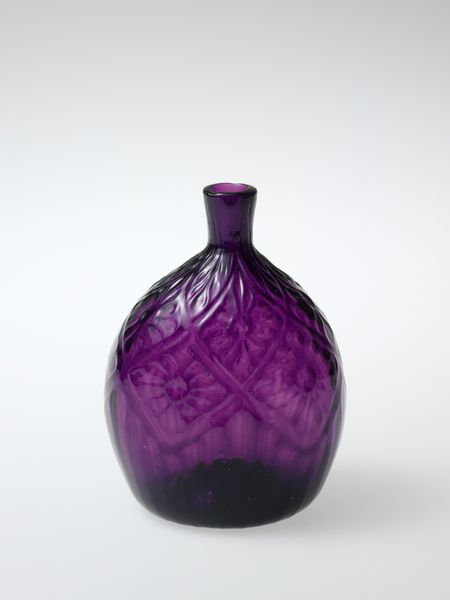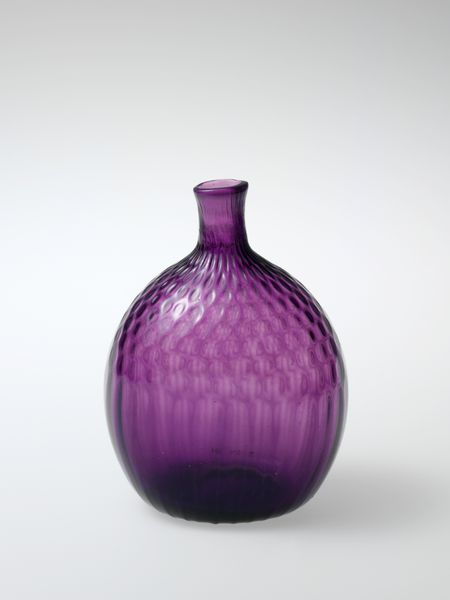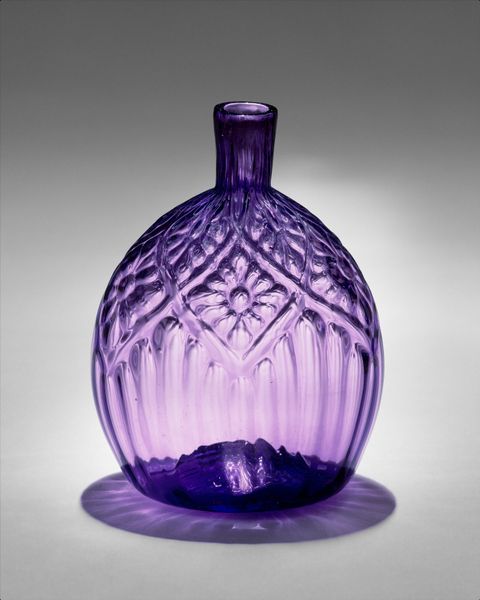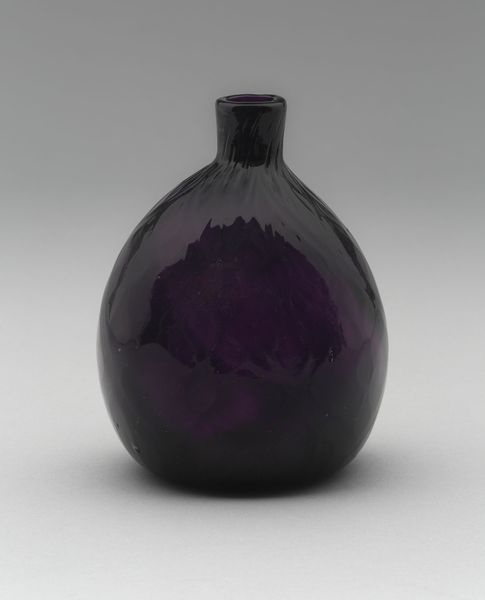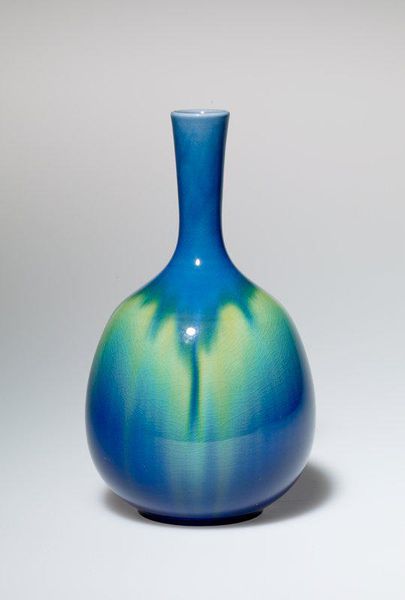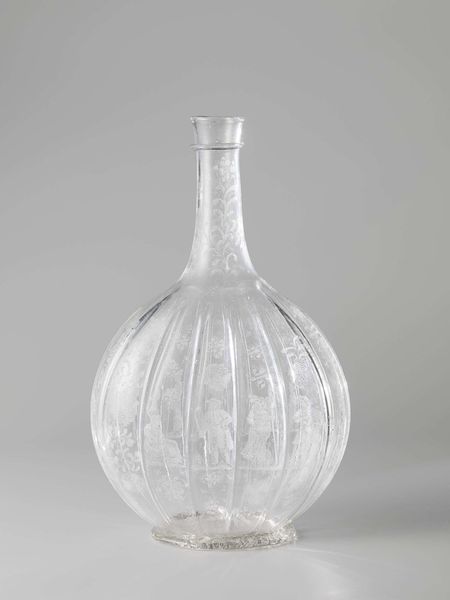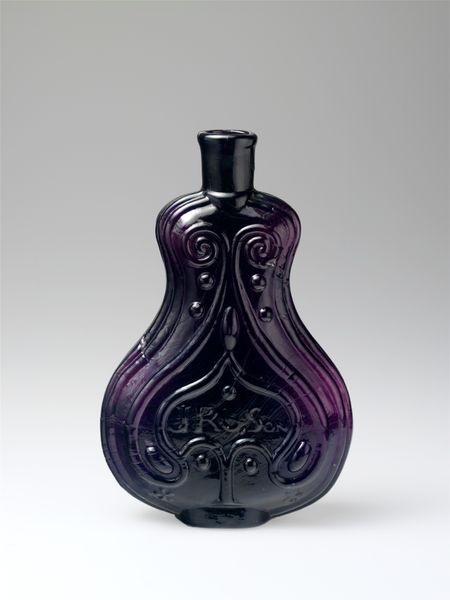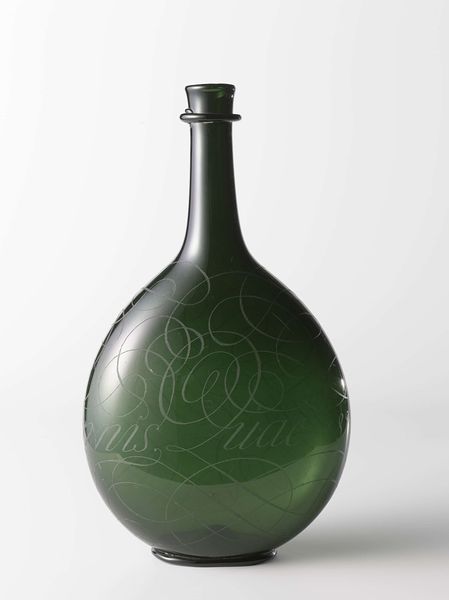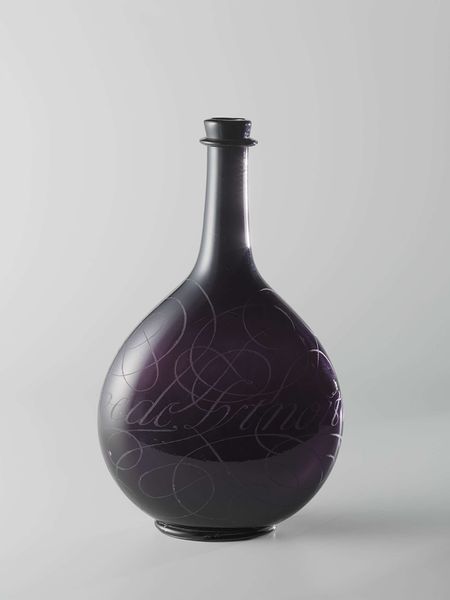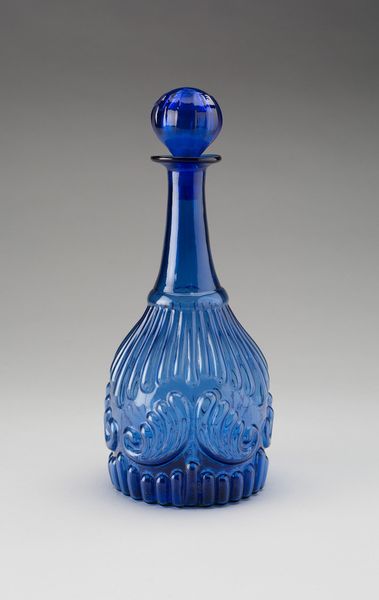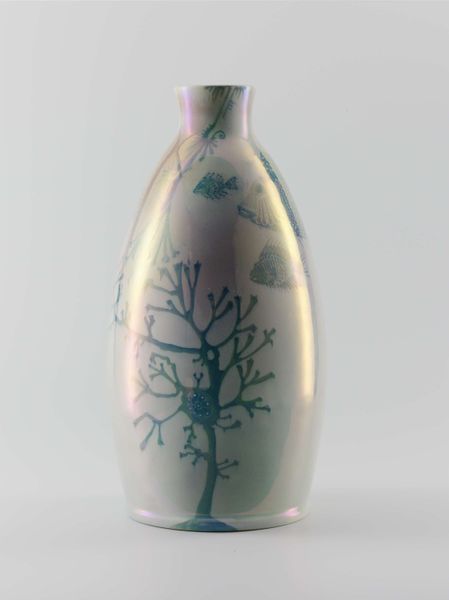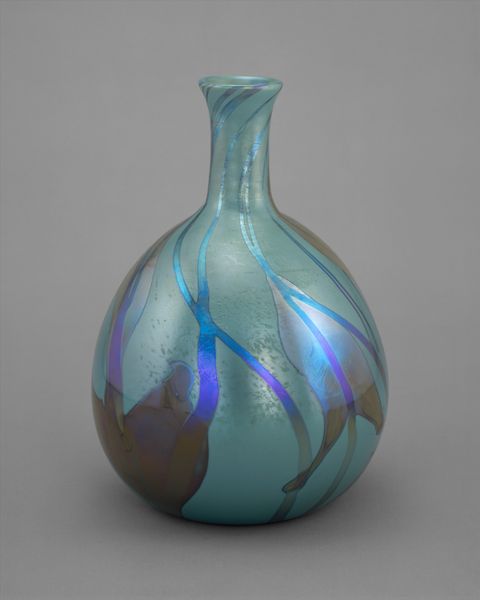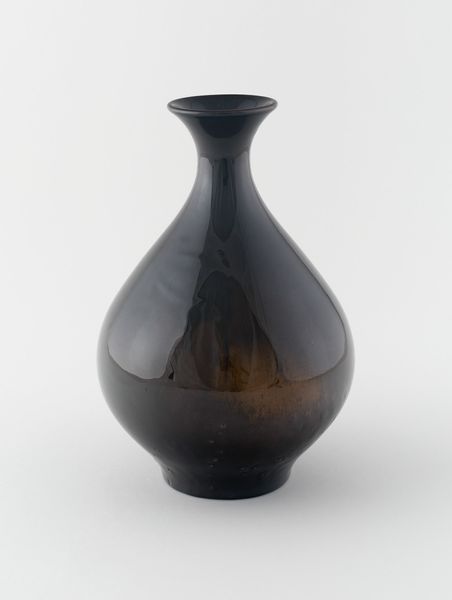
glass
#
neoclassicism
#
glass
#
united-states
#
decorative-art
Dimensions: H. 4 3/4 in. (12.1 cm)
Copyright: Public Domain
This purple pocket bottle was made by the American Flint Glass Manufactory, sometime between 1764 and 1774. The making of glass objects like this involved careful preparation, precise timing, and teamwork. Molten glass, heated to extreme temperatures, was blown and manipulated with tools to achieve the bottle's form, with its dimpled surface achieved using a mold. The factory setting, with its division of labor, reflects the early stages of industrial production. The rich purple hue wasn't just aesthetic, it was a marker of value, achieved with additives like manganese. Such bottles weren't just containers; they were part of a growing consumer culture. Their existence depended on complex systems of extraction, production, and trade. So, next time you see an object like this, think about the intensive labor involved in its making, and the wider social context in which it was created. By focusing on materials, making, and context, we appreciate the artistry of everyday objects, challenging traditional distinctions between fine art and craft.
Comments
No comments
Be the first to comment and join the conversation on the ultimate creative platform.
